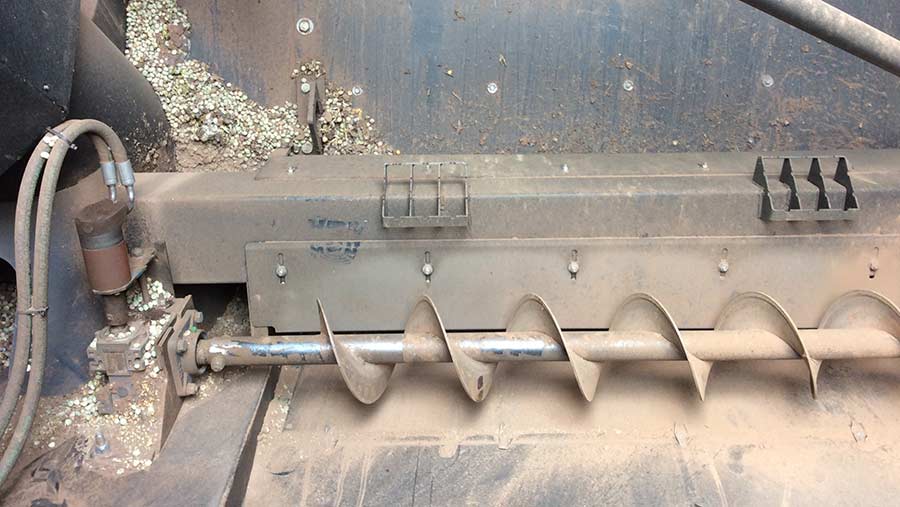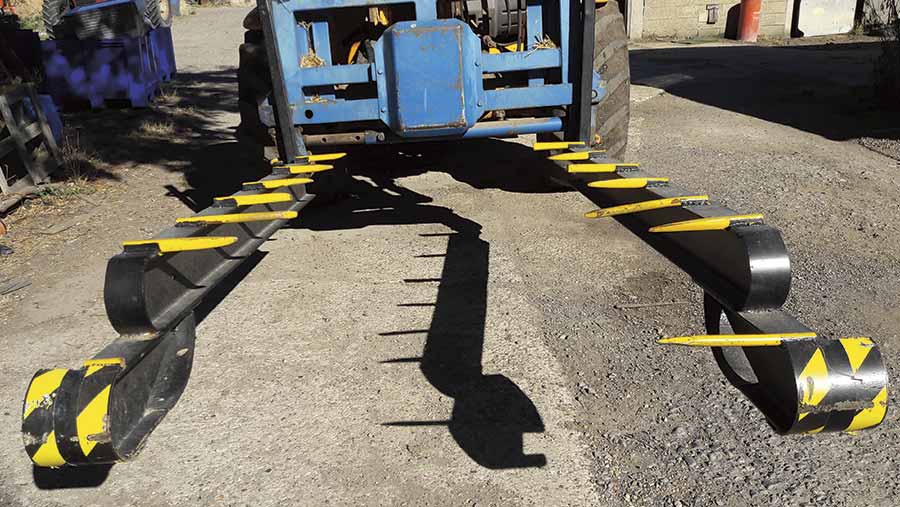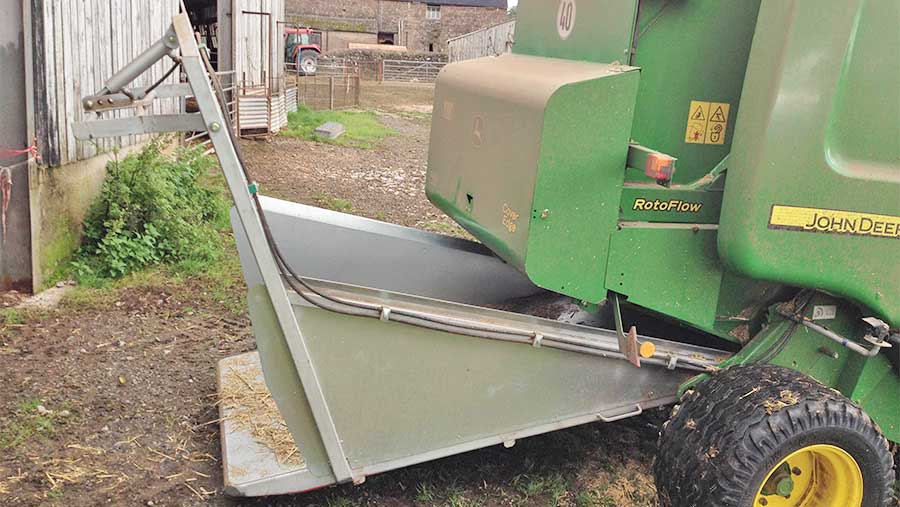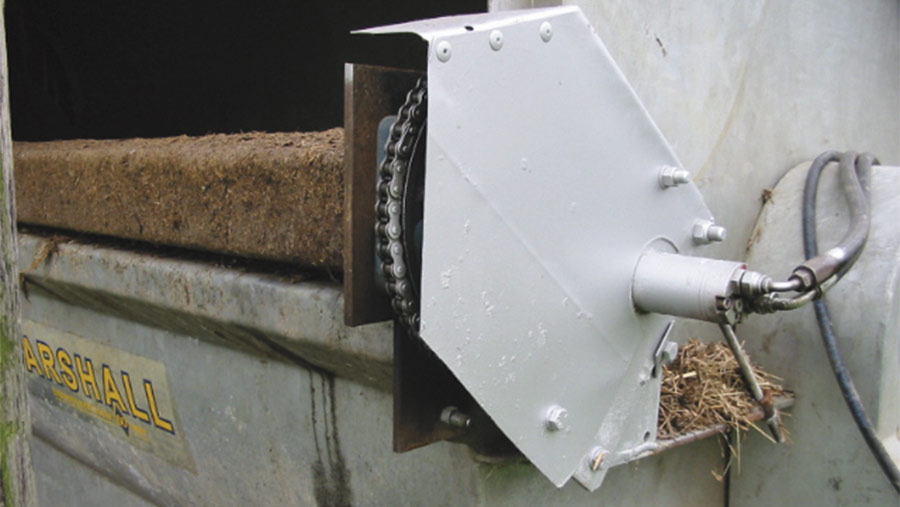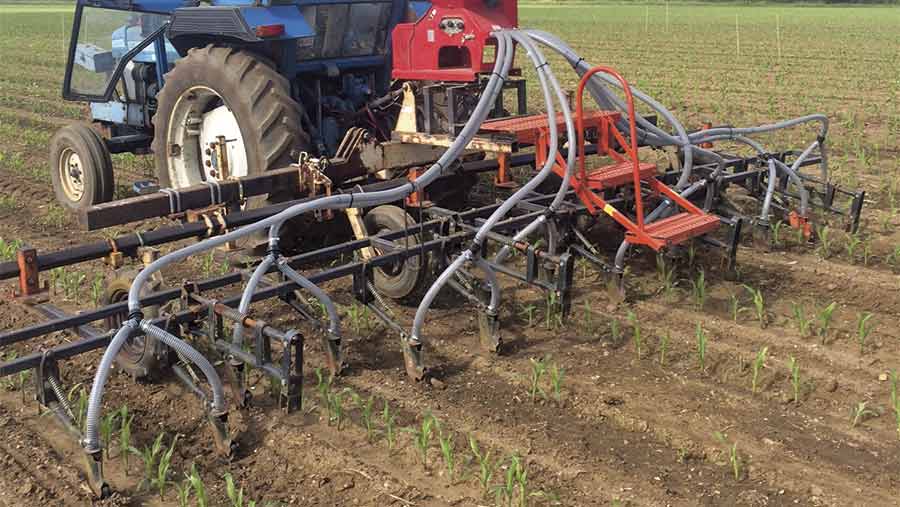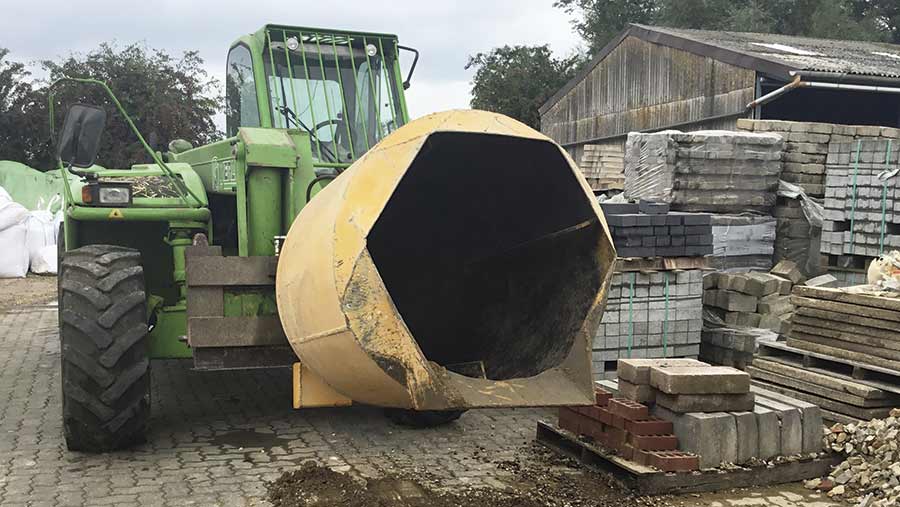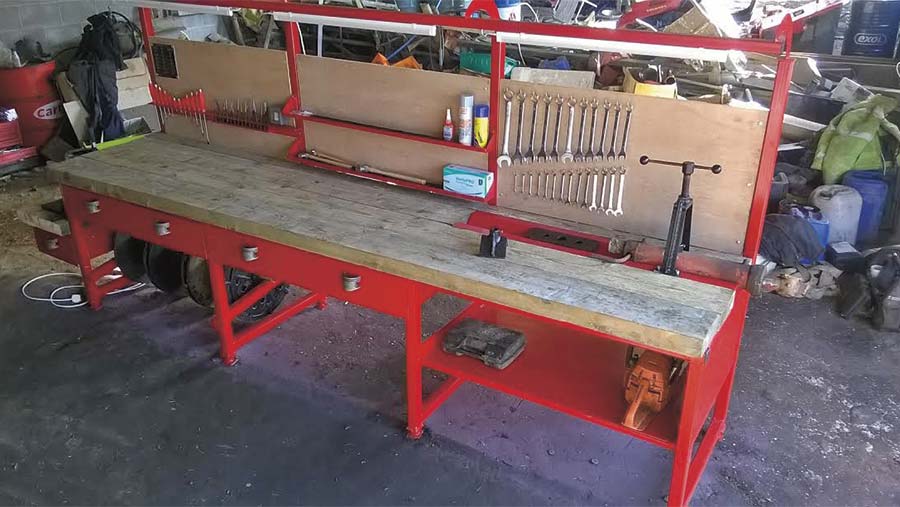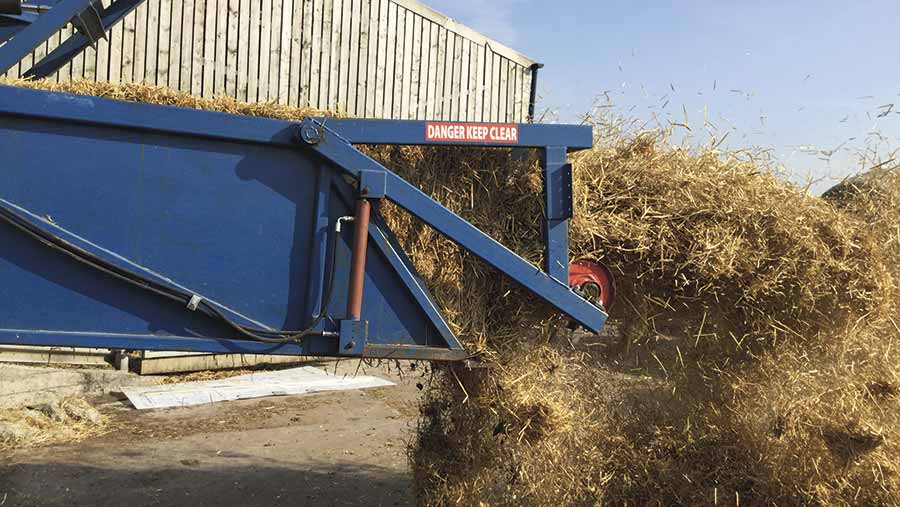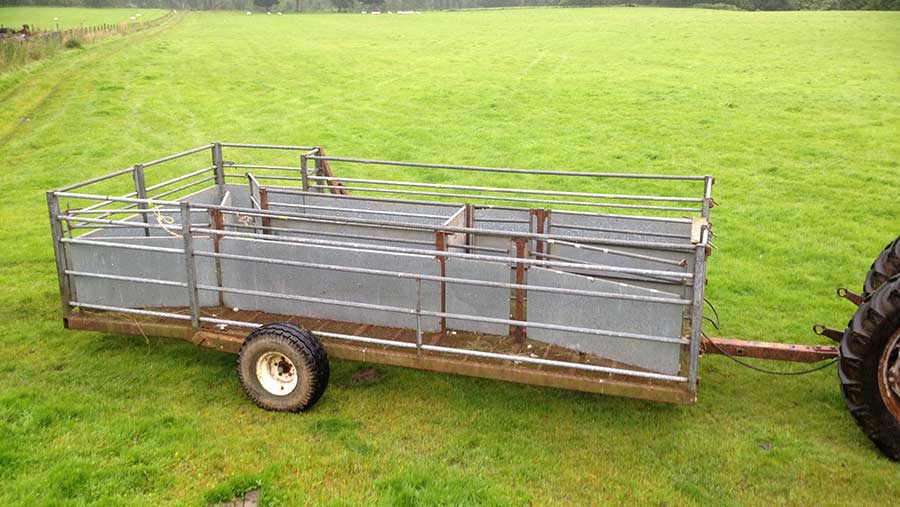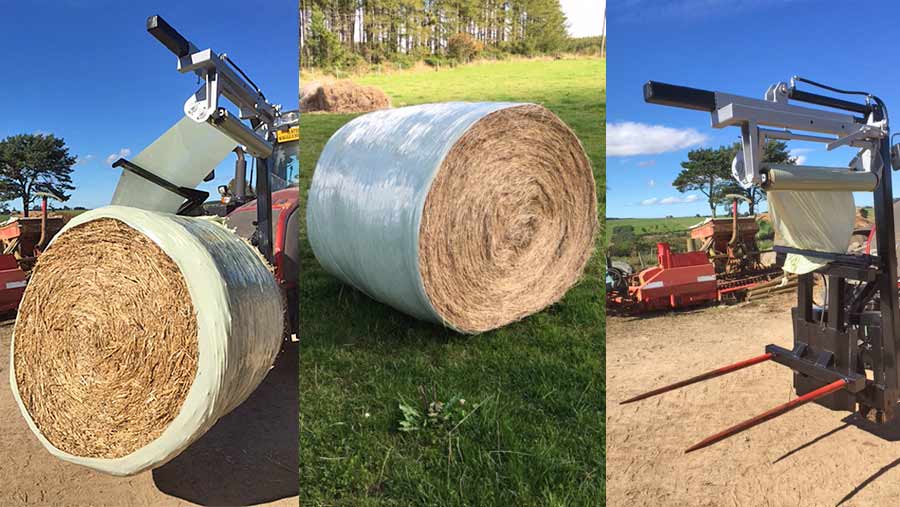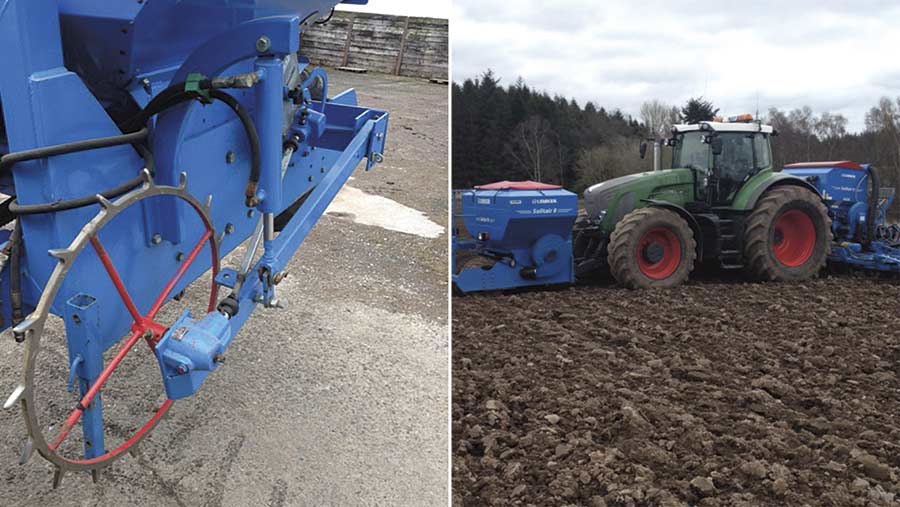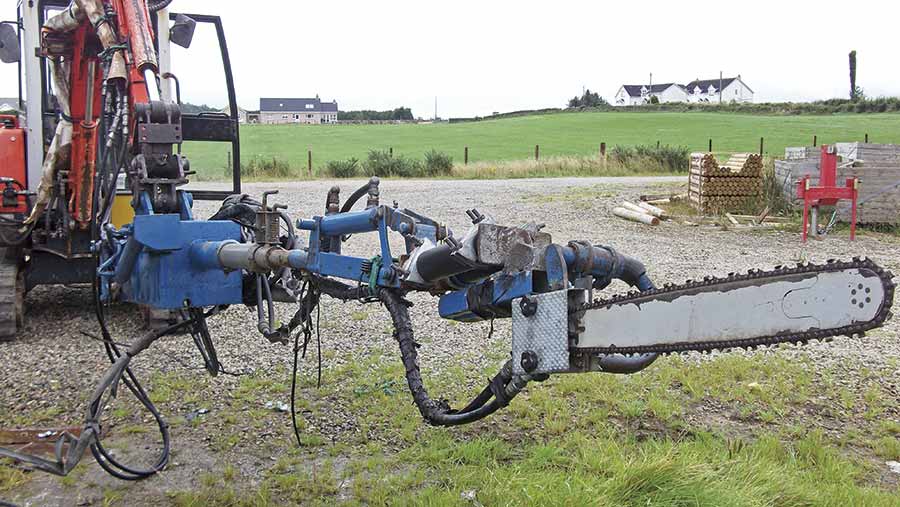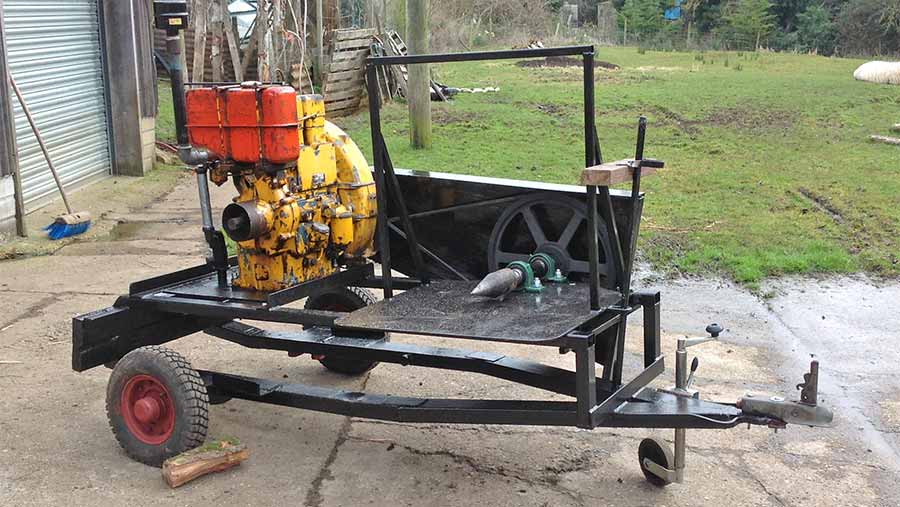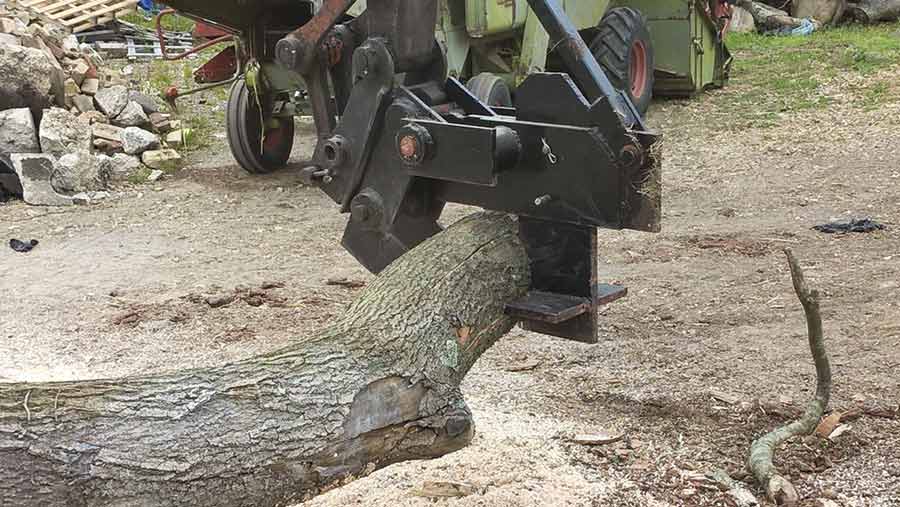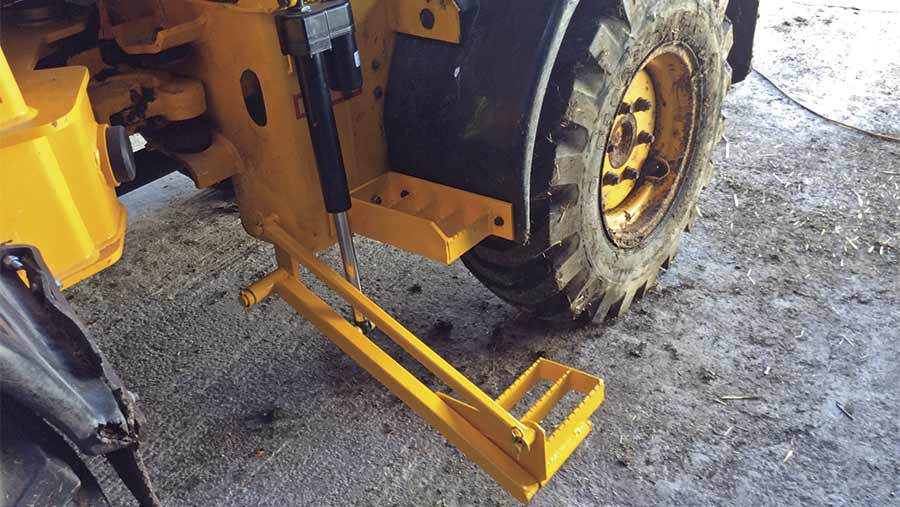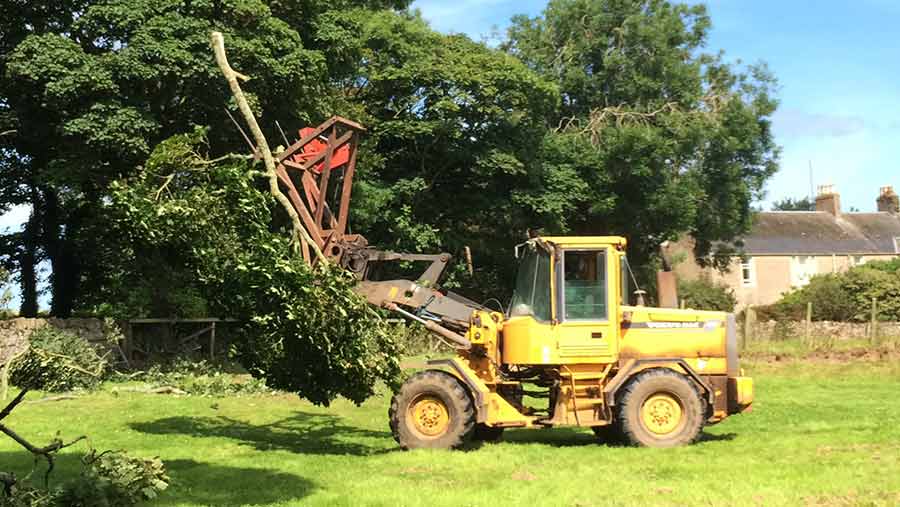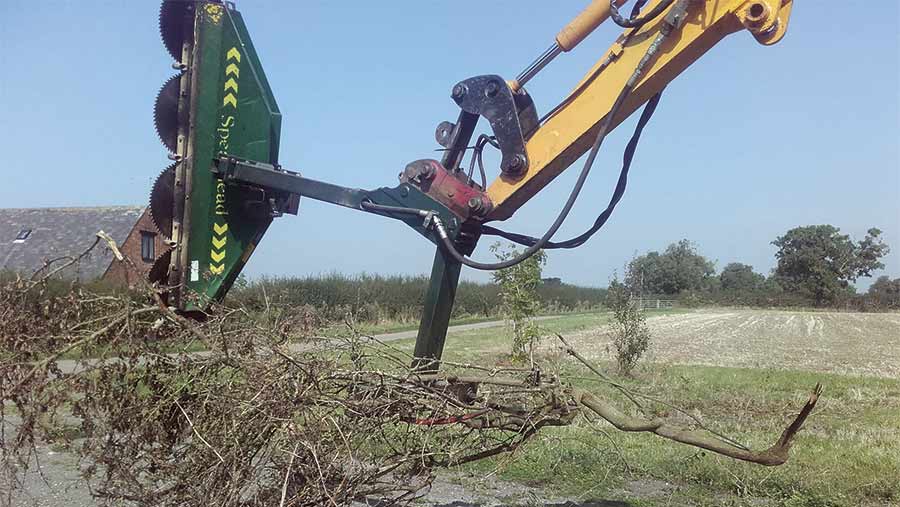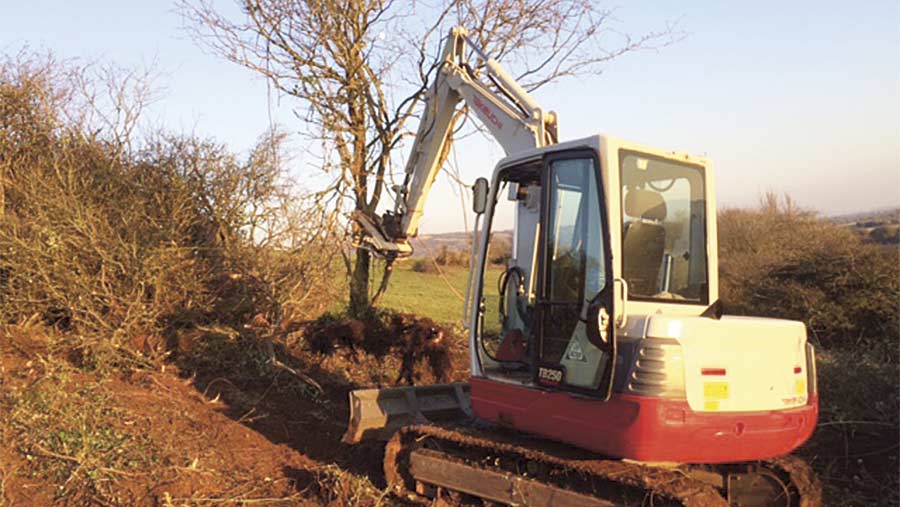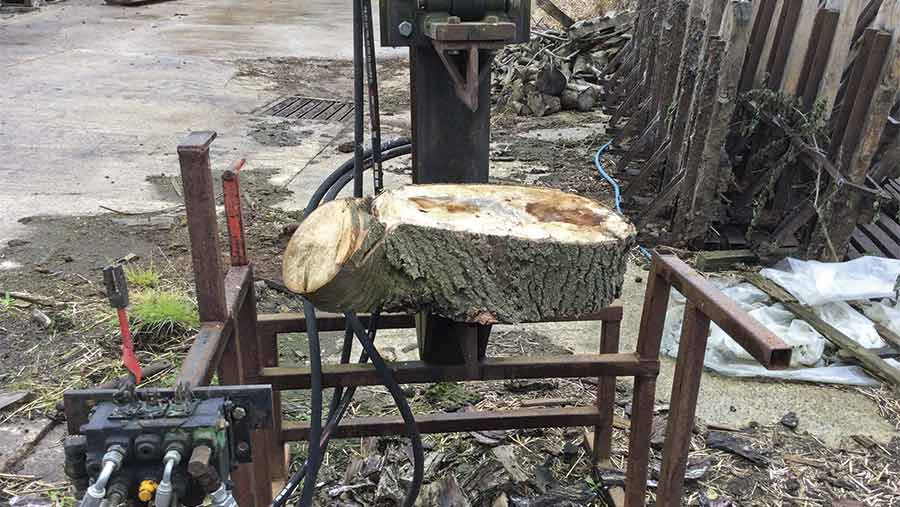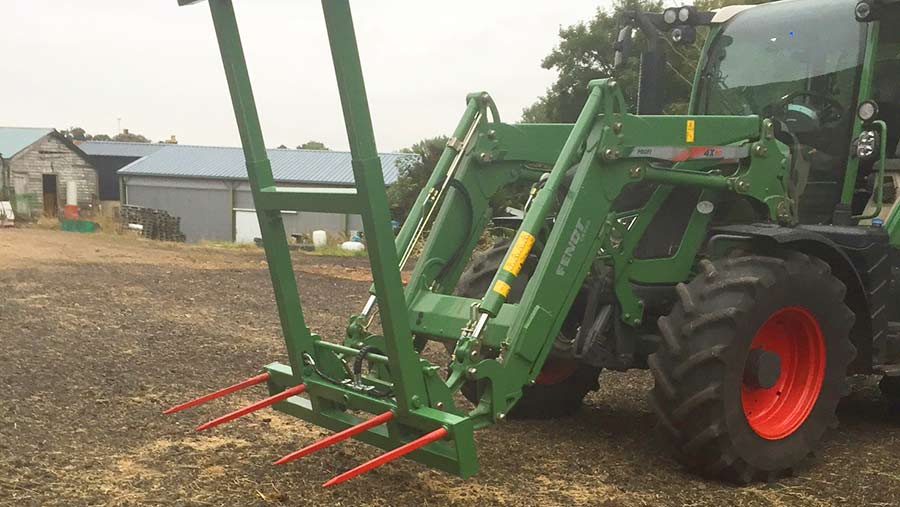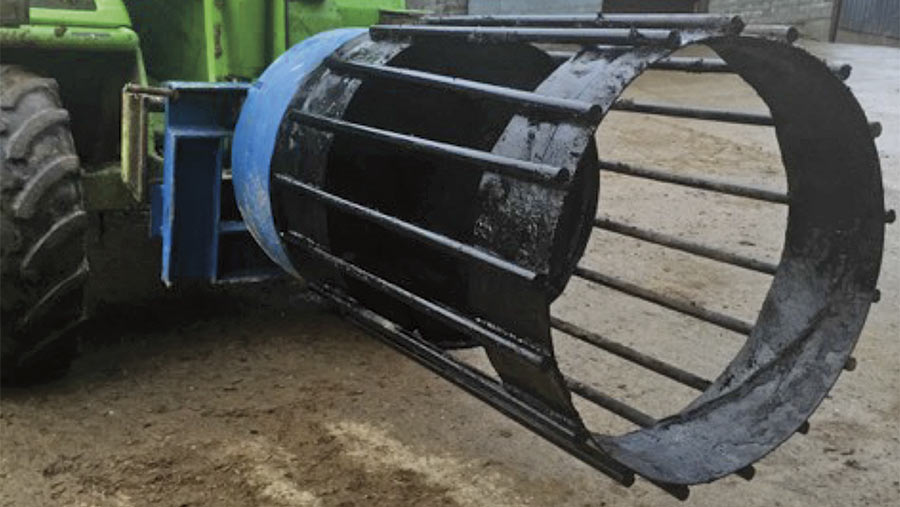In pictures: Intermediate category highlights from the 2016 Farm Inventions Competition
There was a diverse range of entries in this year’s Farm Inventions Competition for the intermediate category, with the Davids of farming world taking on the Goliaths of manufacturing.
All of the inventions featured clever modifications to existing machinery and wouldn’t break the bank either, with most of the parts being recycled or cheap to purchase.
See the winner, runner up and highly commended entries, and a pick of the rest.
Next week we’ll reveal the winners of the complex category.
Winner: Oliver Williams’s combine tank auger
Grain bridging in the combine tank is a constant problem for those that harvest dampish grass seed, and it drove Oliver Williams to fit a second auger designed to encourage the material to keep moving during unloading.
A lateral 7in diameter auger was mounted alongside the main tank auger. It saves climbing up and poking the crop with a stick at every offload.
Using a stripper header to harvest the seed meant there was a spare hydraulic coupling – usually taken up by the rams that move the reel in and out.
Mr Williams made use of the extra coupling by plumbing in a small hydraulic motor that directs its power through a 7:1 reduction gearbox.
It means the auger can be turned forwards or reversed via the normal joystick controls in the cab, allowing the seed to be agitated in the tank.
See also: In pictures: Simple category highlights from the 2016 Farm Inventions Competition
With the taps turned off and the normal combine header fitted, the auger is disabled so that it doesn’t affect free-flowing crops such as wheat from exiting the tank.
Runner-up: Hugh Richards’s Alligator bale grab
Kent livestock farmer Hugh Richards spends several days through harvest collecting 1,500 4ft x 2ft straw bales from his arable neighbours.
Unable to convince his baling contractor to buy an accumulator, and with a big 20-bale collector out of his price range, he set about building an attachment for his telehandler.
It took him two-and-a-half days to finish the Alligator grab, which picks up big bale straw endways to plonk one on top of the other.
The design sees two rails each carrying eight menacing-looking 280mm tines, while curved steel ends act as skis to avoid digging into the ground.
The loader’s third service is used to squeeze the tines into the side of the bale deeply enough to cope with the weight.
It means the telehandler can run parallel with the tramlines and dump the stacks on the headland ready for collecting with the trailer.
For the loader driver it’s a much smoother ride and minimal soil compaction keeps the arable farmers happy, too.
Highly-commended: Wayne Heath’s round bale accumulator
Herefordshire farmer Wayne Heath’s round bale accumulator helps speed up the job of collecting hay and straw for his 350 ewes.
A hydraulically operated gate holds one bale on the rear table until the second is ready to be released, leaving bales in pairs across the field.
The ram is operated on a separate spool, which means Mr Heath can control the speed of opening to drop the bales precisely when on a bank.
The accumulator is hooked to the axle of the baler, allowing it to pivot if it hits the floor. It was mainly built from odds and ends and by the time Mr Heath had bought the ram, pipe and extra steel needed, the bill was a smidge under £200.
Richard Bowen’s Rotaspreader rotating bib
One of the trademarks of a side-discharge muck spreader is a dribble of manure that falls off the bib and is then squashed by the spreader’s wheel.
Welshpool farmer Richard Bowen has managed to stop the muck build-up by adding a length of 125mm (5in) box that rotates at 400-500rpm to throw it clear.
Power is provided by a hydraulic motor (pinched from a redundant silage block cutter), while 50mm (2in) bearings at each end keep things in line.
The total build cost was a shade under £200, including a new chain and sprockets.
Oliver Mackintosh’s inter-row grass seeder
Undersowing maize with grass is becoming a popular way of establishing an over-winter cover crop long before autumn harvesting to reduce leaching and soil erosion.
Oliver Mackintosh spent just £500 building a lightweight drill for the job by making use of a Stocks Turbo Jet seeding unit that was already on the farm.
The end result was a hybrid of an old KRM piggyback seeder with Suffolk coulters, which was dismantled and the working parts relocated to a retired sugar beet drill that formed the folding main frame.
Guide wheels keep the 16 coulters at a steady working depth of about 10mm across eight rows of maize.
Frank Henderson’s cement mixer
Keen fabricator Frank Henderson built his own telehandler-mounted cement mixer for churning bulk loads of concrete and shifting it to hard-to-reach places.
To start, Mr Henderson sliced an old gas tank in half to form a large drum, which he then welded to one side of an old 28in tractor wheel rim.
On the other side, blobs of weld glue a chunky roller chain in a loop around the wheel.
He sourced a hydraulic motor from China, which turned out to be a copycat of a British version but at a fraction of the price – and with the promise of a two-year guarantee.
It sends the power through a sprocket wheel to turn the chain.
In use, the driver can scoop up a load of ballast, tilt the headstock back and rotate the drum a couple of times, with four bars inside the barrel set at varying heights for the maximum mixing effect.
A full load roughly equates to 48 shovels’ worth, so a couple of bags of cement complete a 6:1 mix, with water then added to suit the desired consistency.
Arthur Selby’s lightweight post driver
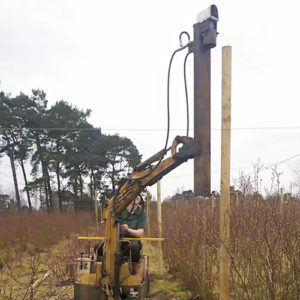 Arthur Selby’s first entry is a lightweight digger-mounted post driver.
Arthur Selby’s first entry is a lightweight digger-mounted post driver.
A regular tractor-mounted post driver was too wide for the narrow rows of blueberry bushes, around which he was contracted to knock in 300 3m (10ft) fence posts to support bird netting.
An RSJ forms the body of the knocker and provides extra reach for the long posts.
It works by striking the top of the post with a piston on a crankshaft rotating at 2,000rpm.
A cup at the top prevents the machine from slipping off the post and a simple plumb chain attached to the bottom gives the operator a decent idea of how vertical the post is.
The project took around six weeks of spare time to complete and cost around £80, which went towards hydraulic fittings and three bearings.
An old hydraulic motor was found lying around the workshop, while the other components were machined from scratch, including the crankshaft.
Ieuan Evans’s workbench
Workshop benches are notoriously untidy, but Ieuan Evans decided it was time to put an end to the mess by building a custom 12ft worktop.
The main frame is constructed from 2in box section and is connected to plated feet via lengths of threaded bar that allow for small height adjustments.
The drawers and shelves are formed from folded steel, with halved pistons making do as quirky handles, while the wooden work surface does a better job of soaking up thundering hammer blows than a metal equivalent.
At one end, there’s a multipurpose press to push pto UJs apart, while a clamp made from chunky angle iron helps hold rams in place while changing the seals.
At the other, there’s room for a hydraulic pipe crimper and a drawer underneath to stash all the bits required for the job. Hydraulic pipe is tucked away on reels underneath.
Regularly used tools, including spanners, screw drivers and punches, hang in their own storage slot on wooden panels at the back, and there are three LED lights to illuminate the work surface.
David Haynes’s straw spreader
David Haynes from Lutterworth, Leicestershire, built his own straw spreader for bedding pigs.
After scouting out the options on the market, he decided they were all too complicated so set about building a simplified version.
It has only two bearings and a hydraulic motor to run the auger, with straw pushed to the spreader by hydraulic rams.
The auger was originally part of an old Kuhn spreader and was sourced online, leaving Mr Haynes to weld the teeth on in the workshop.
Charlie Forster’s mobile sheep handling system
A tractor-towed mobile sheep pen helps Cumbrian sheep farmer Charlie Forster to manage his 300 ewes.
The system uses a hydraulic lowering axle taken from a JF mower and has a meshed floor that means the muck is left in the field.
The layout includes five pens and eight gates, with the home-made hurdles stored neatly in the pens for transport.
In total, it took a week to build and cost just £300 in parts.
Gordon Stephen’s bale weatherproofer
Aberdeenshire tractor-and-man contractor Gordon Stephen runs a herd of highland cattle on his 4ha croft.
He stockpiles hay and straw bales outside to save shed space, but wet Scottish winters inevitably result in wasted feed.
To protect the grub he made a rig using parts from an old Kverneland wrapper that fits to the front linkage of his Valtra. A rotating spike turns the bale as the film is dispensed, while a clamp holds the wrap.
Including the second-hand wrapper, new metal for the frame and a set of spikes, the build came in at around £1,500 and took a week to make.
Charlie Beattie’s front hopper metering wheel
Charlie Beattie from Loanhead Farm in Perth runs a 6m combi drill with a front hopper to distribute fertiliser during spring barley drilling.
To make better use of the hopper while sowing other crops, he decided he could fill it with seed and transfer it steadily to the rear tank.
A metering wheel on the front is put in or out of work via a hydraulic ram and means both tanks are emptied evenly on the move.
A broken cultivator leg was welded to a 10mm plate and bolted to the side of the hopper frame to form the bracket for the hydraulically controlled metering wheel.
In all, the build took a day to complete. Mr Beattie reckons the new system reduces excessive compaction, but also means he can cover 13.8ha per fill, rather than 5.5ha, when drilling wheat at 180kg/ha.
Cyril Patterson’s tree trimmer
Northern Irishman Cyril Patterson’s tree trimmer might look like a prop from the Texas Chainsaw Massacre, but he makes use of it for tidying along field boundaries and farm tracks.
Manual extension comes by way of an old lorry tipping ram, which is held in place by sprung pins and can reach up to 15m from the digger cab.
At the headstock end of the attachment is a steel box, which houses two cogs salvaged from a scrap gearbox.
The position of these is altered by a ram that runs the length of the box, with up to 90deg of rotation, allowing Mr Patterson to cut upwards, downwards or side-to-side.
All of the parts were free, except for a second-hand hydraulic chainsaw that he found on eBay for £380.
John Fernihough’s self-drive log splitter
John Fernihough spent last winter building a self-propelled log splitter.
Power is provided by a trailer-mounted Lister engine, which was sourced from an old road compressor.
The 10hp engine turns a belt that provides a 4:1 speed reduction to the screw-style splitting mechanism. Two bearings keep the shaft running true to the sharply-pointed splitter, which was sourced from Poland.
For safety, he made a moving bed that can be slid sideways to immediately stop the drive, and a swing-out guard protects the operator from the spinning belt. The total build cost came to about £1,200.
Arthur Selby’s 360 digger log splitter/clamp
Chopping large logs can be tricky with a standard tractor mounted splitter, as a result of their awkward size and weight, so Arthur Selby moved his on to an excavator.
It is powered by the bucket ram, which forces the log on to a two-way splitting edge made from a worn-out bucket lip.
It took about a month of spare time to build and cost £400 in 15mm and 25mm steel plate.
The splitter has also proved useful for handling the logs and even holds heavy branches tight enough for sawing into rings.
Martin Bell’s hydraulic step
County Durham farmer and keen tinkerer Martin Bell fitted a hydraulic step to his pivot steer JCB 407 shovel to help him climb in and out.
He removed the original step, replacing it on one side with the lifting mechanism, which he cobbled together using a couple of short lengths of box section, flat bar and steel tube.
Pivots were fitted to the shovel’s main frame and, when fully lifted by the linear actuator, the system sits well inside the loader’s width to save catching on shed walls.
A new, narrower step was fitted next to the mudguard so that other people could still climb in without having to use the lifting device.
Douglas Dale’s branch lopper
Regularly clearing branches around field boundaries to save clobbering them with the tractor or combine led East Lothian farmer Douglas Dale to build his own loader-mounted lopper.
It fits to the front of the farm’s Volvo shovel via a home-made add-on to extend the reach of the machine, slotting securely on to the two right-hand bale spikes and held in place with a heavy-duty chain.
The chopping section consists of a tough bucket blade that pivots closed like a jaw against one side of heavy box section.
Plenty of power from the shovel’s third service means it can slice through timber up to 150mm in diameter, and because it is mounted on a pivot steer the chop length can be adjusted simply by turning the steering wheel.
It can reach to cut limbs up to 5.5m high and, as the timber is chopped, it falls on to the front forks ready to be carried out of the way.
James Tarry’s saw blade adapter
Another machine designed for hedge maintenance is James Tarry’s adapted saw.
A four-blade Spearhead Quadsaw does the hedgerow chopping, and fits to the JCB 8080’s arm via a two-in-one bracket.
The second part of the adapter uses two curved tines that pick the branches up and dump them in a heap ready for burning.
The tines are mounted at 90deg to the cutter, so while the saw works parallel with the ground for squaring off the top of hedges, the two tines slip either side of the digger’s main arm and well out of the way.
Mounting the rig to an excavator provides plenty of reach, which keeps the cab a safe distance from falling boughs.
The other advantage of mounting it to an excavator is the rubber tracks, which make it easier to work through winter without making a mess.
Simon Warburton’s tree lifter
With several acres of scrub to clear on steep ground, Weston-super-Mare-based Simon Warburton wanted a less taxing alternative to chainsawing.
Using an off-cut piece of strong RSJ and an old power-steering ram, he knocked together his tree lifter, which fits on to the headstock of a Takeuchi midi digger and is powered by the machine’s auxiliary service.
Using a pincer-type movement, it simply grabs the bushes and yanks them out, before dumping them in a pile ready for burning.
Roy Simpson’s log splitter/press
Lincolnshire farmer Roy Simpson’s multi-purpose log splitter also works as a cross-cut guillotine and a press former, thanks to interchangeable home-made heads.
The 12-hour build job relied entirely on scrap bin metal, with a large ram from a Dowdeswell DP2 plough providing the power.
A landside from the old plough also formed the guillotine blade, which cuts through nail-ridden wood like butter, according to Mr Simpson.
The machine is mainly used for chopping old beams, roof timbers, fence stakes and large logs, but is also used to form metal brackets once the head/cutter has been changed.
Tom Hadley’s adjustable bale grab
Tom Hadley built a telescopic bale fork for the front loader of his Fendt tractor.
His design means he can stack multiple big square bales at a time, but also folds up neatly to avoid blocking his view on the road.
He can fit up to five tines in a row on the main frame, which was finished off with a lick of green paint.
Colin Ferguson’s stone barrel
Colin Ferguson’s 250ha dairy farm sits in southwest Scotland’s marginal arable land, where he milks 200 cows alongside 40ha of crops.
The fields are littered with boulders that regularly need removing and he found scooping them up with the loader bucket gathered too much soil.
Inspired by an industrial grading plant featured on an episode of Gold Rush, he set about building a big rotating barrel to remove large stones and sieve out the soil.
He started by removing the screw from an old hydraulic three-point-linkage cement mixer and chopped the barrel in half, before converting it to fit a Merlo headstock. A 30mm steel bar was then welded at both ends of the original barrel to create a cylindrical sieve.
After a season’s work and almost 80ha of land cleared, Mr Ferguson is planning a few winter upgrades.
They include fitting another bar midway along the barrel to prevent long, thin stones falling through and hydraulic flow reducers on the handler feed to slow the rotation speed.
It took a week of intermittent work to build, with £100 going on new metal and £200 on pipework.

